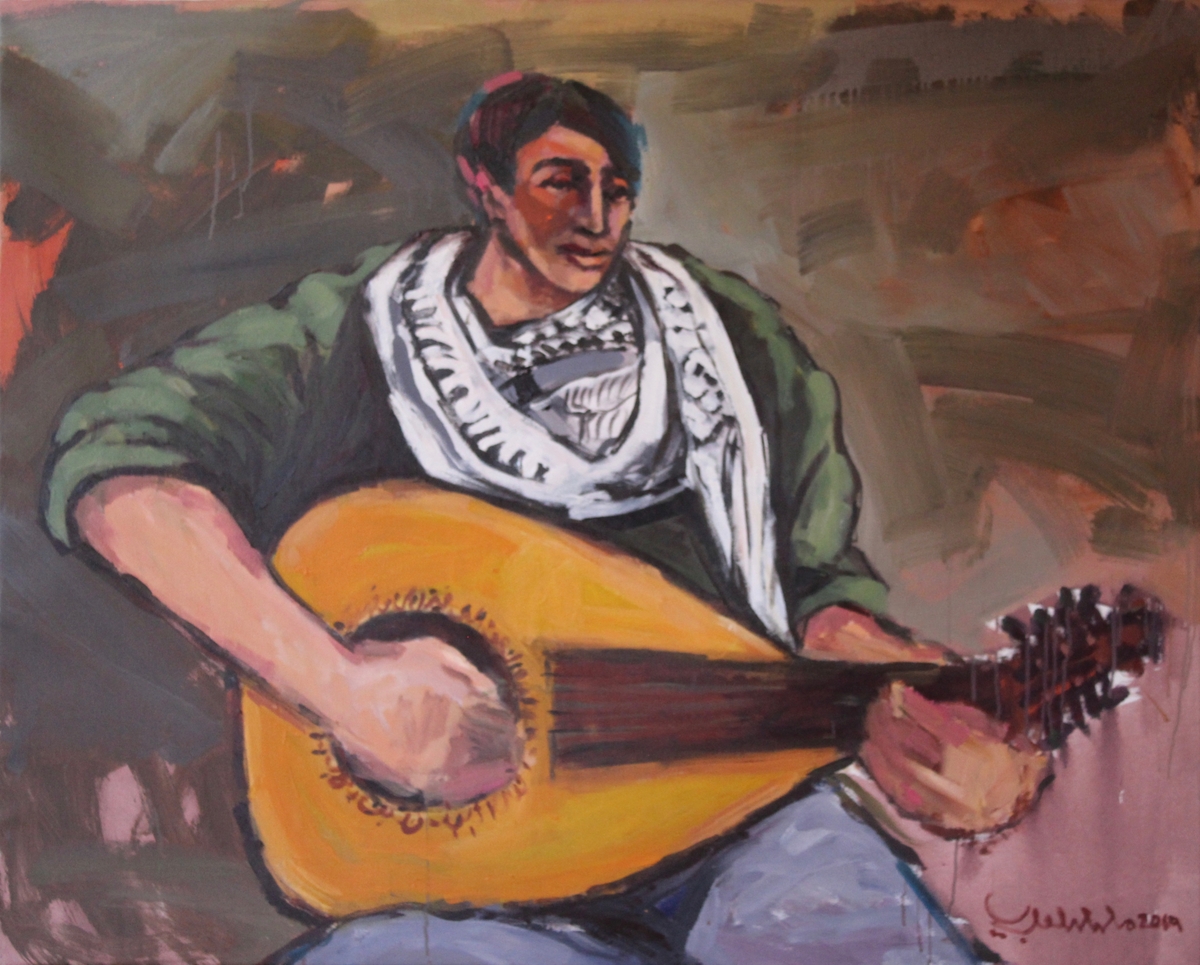
Brian Slattery Photo
Shaunda Holloway’s Nature’s Children greets viewers as soon as they enter the second floor of the gallery at Creative Arts Workshop. Over the shoulder of that piece, Aisha Nailah’s HER stands ready, like an ally. From the doorway, it’s easy to see that the pieces in the show, by multiple artists, share affinities in form and color, as well as subject matter. The diversity of the voices is vast. But they’re all in the same cause together.
The pieces are part of “Made Visible: Origins of Belonging,” curated by Kim Weston of Wábi Gallery and running now at Creative Arts Workshop through March 16, with an artists’ talk this Saturday, Feb. 17, at 2 p.m. Featuring art from Bethani Blake, Anindita Dutta, Juan Giraldo, Mohammed Al Hawajri, Shaunda Holloway, Aisha Nailah, Dennis RedMoon, Sain’t, Remy Soca, and Kim Weston, the exhibition, as an accompanying note states, is an “exploration into the rich tapestry of interconnected narratives within Black and Brown communities. The exhibition brings together individuals hailing from diverse regions, including the African diaspora, India, Native Americans, the Dominican Republic, Puerto Rico, Colombia, Mexico, Jamaica, Panama, and Palestine.”
The show “examines the shared cultural bonds that unite these communities, delving into the nuances of their ceremonial practices and the profound impacts of historical events, such as colonialism, on their lands” and resources, as well as “the religious impact on Indigenous customs and sexual exploitation of women and children.”
Importantly, the show isn’t just about outward resilience in the face of oppression. “The narratives presented in the exhibition extend beyond cultural celebrations to address the sobering realities of crimes against women and the vulnerability of children within these communities,” the accompanying text continues. “By weaving together stories that reflect both resilience and challenges, ‘Origins in Belonging’ fosters a deeper understanding of the complexities that shape the identities of Black and Brown individuals. Visitors are not only invited to witness these shared histories but also to engage in critical reflection on the enduring strength that arises from collective cultural heritage. The exhibition becomes a platform for dialogue, encouraging a nuanced exploration of the past while emphasizing the importance of unity in the face of shared struggles.”

Mohammed Al-Hawajri
The Oud Player.
The sense of shared struggle against an outside oppressor is sharpened by the presence of Gazan artist Mohammed al-Hawajri’s The Oud Player. The pattern of the keffiyeh around the musician’s neck indicates his support for the cause of Palestinian independence, but it’s an old symbol, dating to the 1930s, before the creation of the state of Israel, when Palestinians revolted against what were then their British colonial overlords and the British policy of open Jewish migration to the region. It’s a reminder that the present-day destruction of Gaza is tied to an conflict that has been going on for a long time. And the oud player isn’t stating his resistance by taking up arms, but by making art. What is the music he plays? If it’s in the style of the painting, it’s songs that are steeped in tradition, yet entirely relevant to the present.

Kim Weston
Outside Myself; Firewalker; Birdman; 5,000 Flowers, 5,000 Prayers.
The dual ideas in al-Hawajri’s painting of having to deal with an immediate crisis, while also knowing that one must abide in the fact that the crisis has deep roots in problems that will likely not be solved soon, find an analogue in Kim Weston’s installation. Her three photographs of dancers, coupled with a mound of flowers, are simultaneously signals of Weston’s deepening explorations of her own Indigenous heritage, and an acknowledgement that grasping it all at once can feel impossible, ephemeral. But the work can’t stop just because it’s difficult; not when the rewards in understanding history and oneself better, and in the chances for moments of even fleeting beauty, are so great.

Remy Sosa
Waiting for Godot II.
Remy Sosa’s piece Waiting for Godot II runs with a similar point. The title activates the piece, letting us see the stoicism in the subject, as well as some of the absurdity, and even humor. The playwright of Waiting for Godot, Samuel Beckett, once said that “when you are in the ditch, there’s nothing left to do but sing.” Sosa partakes of that same feeling. The problems before so many people can seem insurmountable. But there’s dignity in bearing it. In finding places for song, there’s resistance, if only in the insistence on affirming life, and finding places for happiness even under duress.

Juan C. Giraldo
Esperansa, Hammond, IN.
Juan C. Giraldo’s photograph takes in all that struggle — both within and outside the community — and reminds us what it’s all for. The image is startling in its realism, giving us a thousand details in one sweep of the life that surrounds the kid, from her material circumstances to the question marks regarding her parents. (Where are they? Are they out working? Are they in the next room, letting her sleep? Are we looking at the child through one of the parents’ eyes?) There’s so much uncertainty, and at the same time, in this moment, a keen sense of refuge. The child is safe here, for as long as she stays in the frame, or perhaps for as long as the frame stays with her. There’s a power in that fact that in some ways goes deeper than any conflict.
“Made Visible: Origins of Belonging” runs at Creative Arts Workshop, 80 Audubon St., through March 16. Visit CAW’s website for hours and more information.